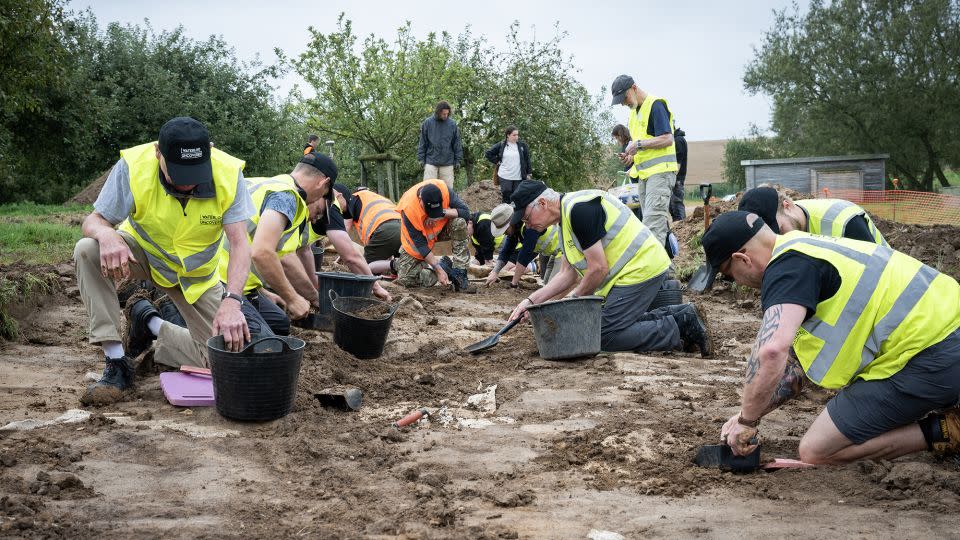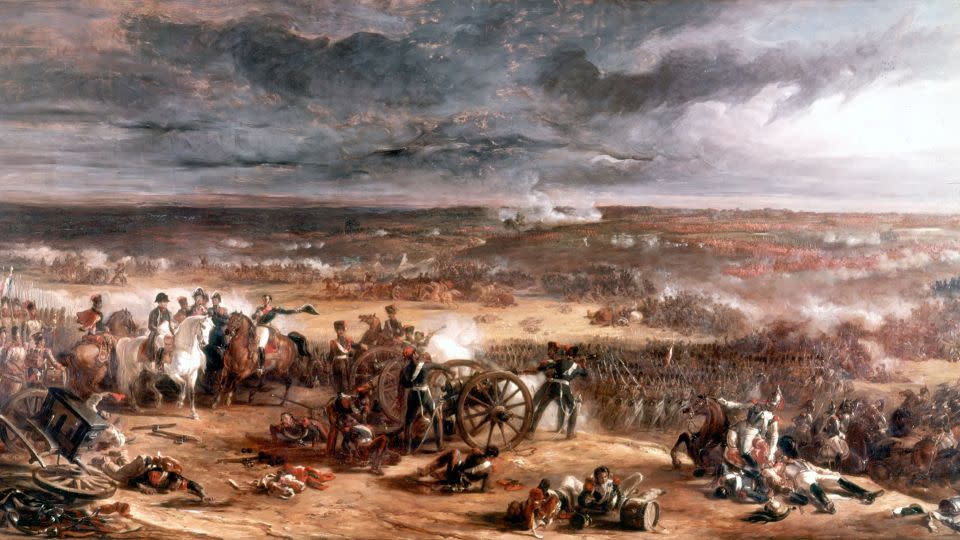Amputated limbs and butchered horses uncovered in Battle of Waterloo ‘gore’ pit
A pile of amputated limbs and the remains of several military horses have been excavated at the site of the Battle of Waterloo.
The gruesome discovery was made at a farm in Belgium by Waterloo Uncovered, a UK charity that combines archaeology with veteran care.
The epic battle was fought near Waterloo village, south of Brussels, on June 18, 1815. Napoleon Bonaparte was defeated by the Duke of Wellington’s combined allied army of 68,000, aided by about 45,000 Prussians under Gebhard Leberecht von Blücher.
While thousands were killed during the battle, only two complete skeletons have ever been discovered at the site.
Two years ago, the organization unearthed a complete human skeleton at Mont-Saint-Jean farm in Belgium. The site is believed to have served as Wellington’s field hospital.
A team of archaeologists, veterans and serving personnel has returned this month to the same site to continue the work. Led by Tony Pollard, a professor of conflict history and archaeology at the University of Glasgow and the charity’s archaeological director, they unearthed a “unique battle clearance trench” at the hospital site.

The trench is thought to have been designed to clear the hospital of gore after the battle. It contained “deposits of human and animal remains separated by a barrier of ammunition boxes stripped from soldier’s leather satchels,” according to a press release published by the University of Glasgow this week.
To the north of the trench, they found remains of an ox and at least seven horses. Some of these showed signs of having been butchered, while three appeared to have been euthanized with a “musket ball to the head.”
A pile of amputated human limbs were unearthed south of the trench, some of which still showed signs of having been removed by a surgeon’s saw.
There were an estimated 500 limb amputations at the Mont-Saint-Jean field hospital during the famous battle, with approximately 6,000 allied soldiers and their French prisoners being treated there. Limb injuries made up 65% of the injuries sustained during the battle.
When combined with the emergence of the skeleton in 2022, the new finds provide a harrowing snapshot of the aftermath of the battle.
“I can’t think of any other site that has this combination of elements – it’s truly unique, within Napoleonic archaeology and beyond,” Pollard said in the press release.
“The layout of the trench, with all animal remains on one side of the ammunition box barrier and all the human remains on the other, strongly suggests that the men who buried this individual [the skeleton found in 2022] attempted to offer him a level of dignity and respect despite the horrific scene they would have found themselves facing while clearing the field hospital of the dead.”

According to Waterloo Uncovered, its projects use the “unique lived experience of veterans and serving personnel to help interpret their discoveries.”
Abigail Boyle, CEO of Waterloo Uncovered, said in the release: “It may seem counterintuitive to put injured veterans back on a battlefield, but it’s actually extremely beneficial.
“Many elements of their time engaging in practical archaeology feel familiar to those who have served – routine, camaraderie with fellow service people, physical outdoor work – but here, they’re mixing with a wide range of people, including civilians, and learning a variety of transferable skills that will aid them in their transition.”
Sign up for CNN’s Wonder Theory science newsletter. Explore the universe with news on fascinating discoveries, scientific advancements and more.
For more CNN news and newsletters create an account at CNN.com






